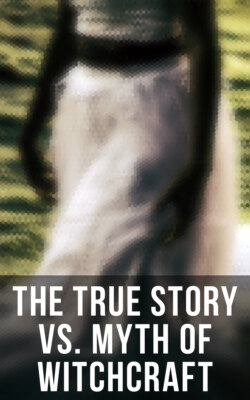Читать книгу The True Story vs. Myth of Witchcraft - William Godwin - Страница 219
На сайте Литреса книга снята с продажи.
APPENDIX TO CHAPTER I.
ОглавлениеThe ancient magic included various kinds of divination, of which the principal may here be catalogued:
Aeromancy, or divination from the air. If the wind blew from the east, it signified good fortune (which is certainly not the general opinion!); from the west, evil; from the south, calamity; from the north, disclosure of what was secret; from all quarters simultaneously (!), hail and rain.
Axinomancy, practised by the Greeks, more particularly for the purpose of discovering criminals. An axe poised upon a stake, or an agate on a red-hot axe, was supposed by its movement to indicate the offender. Or the names of suspected persons were called out, and the movement of the axe at a particular name was understood to certify guilt.
Belomancy, in use among the Arabs, was practised by means of arrows, which were shot off, with written labels attached to them; and the inscription on the arrow first picked up was accepted as prophetic.
Bibliomancy, divining by means of the Bible, survived to a comparatively recent period. The passage which first caught the eye, on a Bible being opened haphazard, was supposed to indicate the future. This was identical with the Sortes Virgilianæ, the only difference being that in the latter, Virgil took the place of the Bible. Everybody knows in connection with the Sortes the story of Charles I. and Lord Falkland.
Botanomancy, divining by means of plants and flowers, can hardly be said to be extinct even now. In Goethe’s ‘Faust,’ Gretchen seeks to discover whether Faust returns her affection by plucking, one after another, the petals of a star-flower (sternblume, perhaps the china-aster), while she utters the alternate refrains, ‘He loves me!’ ‘He loves me not!’ as she plucks the last petal, exclaiming rapturously, ‘He loves me!’ According to Theocritus, the Greeks used the poppy-flower for this purpose.
Capnomancy, divination by smoke, the ancients practised in two ways: they threw seeds of jasmine or poppy in the fire, watching the motion and density of the smoke they emitted, or they observed the sacrificial smoke. If the smoke was thin, and shot up in a straight line, it was a good omen.
Cheiromancy (or Palmistry), divination by the hand, was worked up into an elaborate system by Paracelsus, Cardan, and others. It has long been practised by the gipsies, by itinerant fortune-tellers, and other cheats; and recently an attempt has been made to give it a fashionable character.
Coscinomancy was practised by means of a sieve and a pair of shears or forceps. The forceps or shears were used to suspend a sieve, which moved (like the axe in axinomancy) when the name of a guilty person was mentioned.
Crystallomancy, divining by means of a crystal globe, mirror, or beryl. Of this science of prediction, Dr. Dee was the great English professor; but the reader will doubtless remember the story of the Earl of Surrey and his fair ‘Geraldine.’
Geomancy, divination by casting pebbles on the ground.
Hydromancy, divination by water, in which the diviner showed the figure of an absent person. ‘In this you conjure the spirits into water; there they are constrained to show themselves, as Marcus Varro testifieth, when he writeth how he had seen a boy in the water, who announced to him in a hundred and fifty verses the end of the Mithridatic war.’
Oneiromancy, divination by dreams, is still credited by old women of both sexes. Absurdly baseless as it is, it found believers in the old time among men of culture and intellectual force. Archbishop Laud attached so much importance to his dreams that he frequently recorded them in his diary; and even Lord Bacon seems to have thought that a prophetic meaning was occasionally concealed in them.
Onychomancy, or Onymancy, divination by means of the nails of an unpolluted boy.
Pyromancy, divination by fire. ‘The wife of Cicero is said, when, after performing sacrifice, she saw a flame suddenly leap forth from the ashes, to have prophesied the consulship to her husband for the same year.’ Others resorted to the blaze of a torch of pitch, which was painted with certain colours. It was a good omen if the flame ran into a point; bad when it divided. A thin-tongued flame announced glory; if it went out, it signified danger; if it hissed, misfortune.
Rabdomancy, divination by the rod or wand, is mentioned by Ezekiel. The use of a hazel-rod to trace the existence of water or of a seam of coal seems a survival of this practice. But enough of these follies:
‘Necro-, pyro-, geo-, hydro-, cheiro-, coscinomancy,
With other vain and superstitious sciences.’
Tomkis, ‘Albumazar,’ ii. 3.
